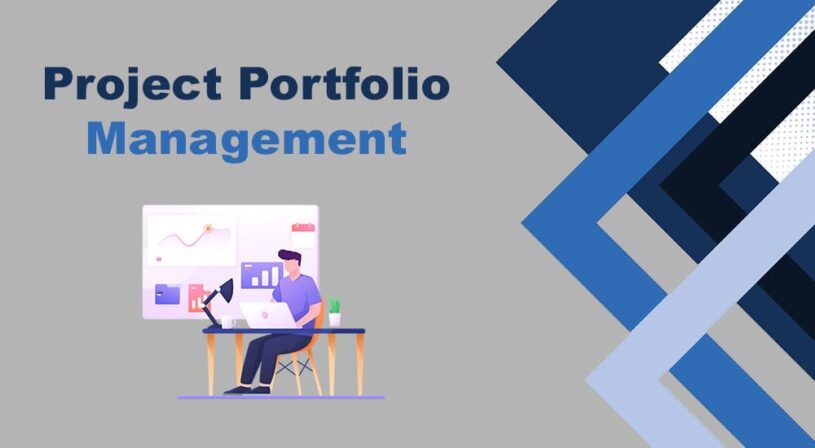Managing a project portfolio can be intimidating and seem daunting, but it can be a manageable and straightforward task with the right tools and approach. This article will scrutinize the different aspects of project portfolio management. The tools and the best practices required to execute projects effectively. By the end, you will have the understanding and resources to build and manage a successful project portfolio. So, let’s get started.
What Is Project Portfolio Management?

Project portfolio management (PPM) is an approach to organizing and managing the various projects within an organization. This can be a complex and challenging task, but fortunately, portfolio management software is available to help streamline and simplify the process. To achieve these goals, portfolio managers need to systematically understand all the projects in their assortment and how they interact with each other.
This software can assist managers in making informed decisions by getting a real-time overview of all the projects in their portfolios. It allows them to analyze project data and identify potential risks or opportunities quickly so that they can allocate resources accordingly.
Why Does Project Portfolio Management Matters for Your Business?

PPM is a discipline within project management that helps businesses select suitable projects, ensure those projects are aligned with strategic objectives, and track progress and performance.
PPM has many benefits, including improved decision-making, increased transparency and accountability, better allocation of resources, and improved project delivery. Through careful analysis of each project, PPM helps ensure resources are allocated efficiently and effectively. This allows businesses to focus on projects most likely to generate a positive return.
PPM can help businesses of all sizes improve their processes and achieve better outcomes. By understanding the risks associated with each project, companies can identify and address any potential issues early on. This helps minimize potential losses and ensure projects stay on track. If your business is not practicing PPM, you may miss opportunities to increase efficiency and optimize results.
Overall, PPM is an essential tool for businesses looking to optimize their operations and maximize their return on investment. By carefully assessing each project, companies can ensure they make the best possible decisions for their organization.
Implementation Guidelines for Project Portfolio Management

A successful PPM implementation requires careful planning and execution. By following the proper guidelines, organizations can streamline their project management and maximize the impact of their investments. Here are some essential implementation guidelines for PPM to execute in your business successfully:
o Define Clear Objectives
Defining clear objectives-based project management strategies is crucial and essential. This includes outlining your key goals, desired outcomes, and measurable criteria for success.
o Identify Stakeholders
Having meaningful insight into who needs to be involved in the PPM process is vital for the successful implementation of a project. Identify all stakeholders and ensure everyone is on board with the goals and objectives of your project portfolio.
o Define Priorities and Set Metrics
When implementing a PPM system, it’s indispensable to establish criteria for prioritizing projects. This should include elements such as costs, timeline, and risk level.
o Establish Procedures
Establishing fruitful project management procedures is integral to successful PPM implementation. These procedures should include processes for initiating, executing, and closing projects.
o Monitor Performance
Finally, set up systems to monitor project performance and manage issues. This includes tracking progress against goals, resolving problems during execution, generating insightful data, and reporting results to stakeholders.
Following these guidelines will help ensure a successful implementation of your PPM system. With the right plan in place, you can ensure that your organization is making the most of its resources and maximizing its potential for success.
How to Specifically Strategize and Execute Project Portfolio Management for Your Business?

PPM is a powerful tool for organizing and monitoring multiple projects simultaneously. It helps businesses oversee and implement the trade-offs between projects, resources, and tactical objectives.
There are four types of project portfolio management: active, passive, discretionary, and non-discretionary. Understanding the difference between these types and their implications for your business is essential to strategize and execute any project successfully.
o Active Portfolio Management
It focuses on actively making changes in response to market conditions or changes in your business. This involves constantly monitoring the performance of projects and adjusting them accordingly. To do this successfully, a business must have an up-to-date understanding of its current and future plans, as well as access to real-time data. With this, companies can capitalize on short-term opportunities while achieving long-term goals.
o Passive Portfolio Management
It involves selecting projects based on past performance rather than actively managing them after implementation. This approach requires less effort since there is no need to monitor the performance of each project continually. However, the drawback is that businesses can miss out on potential opportunities by not actively managing their portfolios.
o Discretionary Portfolio Management
This approach allows businesses to be agile and responsive to changing market conditions. It makes provision for a company to decide which projects are preferable to pick or adjust based on its goals and objectives. However, it also demands a higher level of understanding and expertise to ensure the decisions are sound and benefit the business in the long run.
o Non-Discretionary Portfolio Management
It counts heavily on predetermined criteria or standards to establish and determine which projects should be selected or adjusted. While this approach offers some flexibility, it is crucial to ensure that the standard protocols used by the business are effective in providing the desired results. This type of management is time and again useful when limited time or resources are available for the completion of a project.
Conclusion

PPM provides the tools that are crucial for successful strategy execution, which is vital for any organization looking to stay competitive in today’s business landscape. It is an essential part of business operations and growth. It enables organizations to maximize their return on investment and make useful strategic decisions on the best use of resources.
By creating a comprehensive plan, assessing risks and benefits, and prioritizing projects, organizations will be able to make sure that each initiative gets the attention it needs to be successful.
